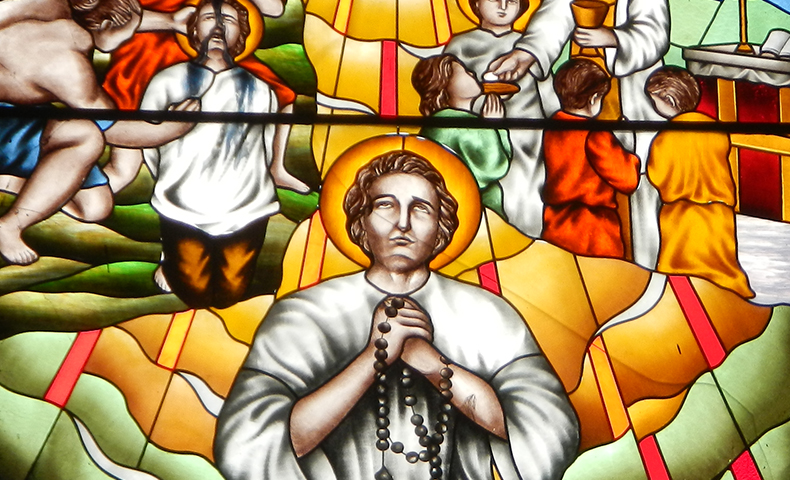San Lorenzo Ruiz and companions, Saint of the day for 22 September

(1600-29 or 30 September 1637)
San Lorenzo Ruiz and the story of his companions
Lorenzo was born in Manila to a Chinese father and a Filipino mother, both Christians. Thus he learned Chinese and Tagalog from them, and Spanish from the Dominicans, who served as an altar boy and sacristan. He became a professional calligrapher, transcribing documents in beautiful handwriting. He was a full member of the Confraternity of the Holy Rosary under the Dominican auspices. He got married and had two sons and a daughter.
Lorenzo's life took a sudden turn when he was charged with murder. Nothing else is known, except for the statement by two Dominicans according to which "he was sought by the authorities because of a murder he was present or attributed to him".
At the time, three Dominican priests, Antonio Gonzalez, Guillermo Courtet and Miguel de Aozaraza, were about to sail for Japan despite a violent persecution. With them were a Japanese priest, Vicente Shiwozuka de la Cruz, and a layman named Lazaro, a leper. Lorenzo, having taken asylum with them, was authorized to accompany them. But only when they were at sea did he know they were going to Japan.
They landed in Okinawa. Lorenzo could have gone to Formosa, but, he said, “I decided to stay with the Fathers, because the Spaniards would have hanged me there”. In Japan they were soon discovered, arrested and taken to Nagasaki. The site of the wholesale bloodshed when the atomic bomb was dropped had already known a tragedy. The 50.000 Catholics who once lived there were either missing or killed by the persecution.
They were subjected to a kind of unspeakable torture: after huge amounts of water were pushed down their throats, they were made to lie down. The long boards were placed on the stomach and the guards were then trampled on the ends of the boards, forcing the water to gush violently from the mouth, nose and ears.
The superior, Fr. Gonzalez died after a few days. Both p. Shiwozuka and Lazaro broke under the torture, which included inserting bamboo needles under the nails. But both were brought back to courage by their comrades.
In Lorenzo's moment of crisis, he asked the interpreter: “I would like to know if, by apostatizing, they will spare my life”. The interpreter did not commit himself, but in the following hours Lorenzo felt his faith grow. He became bold, even bold, with his interrogations.
The five were put to death by hanging upside down in pits. Boards with semicircular holes were mounted around the waist and stones placed on top to increase the pressure. They were closely linked, to slow circulation and prevent quick death. They were allowed to hang for three days. At that point Lorenzo and Lazaro were dead. Still alive, the three priests were later beheaded.
In 1987, Pope John Paul II canonized these six and 10 others: Asians and Europeans, men and women, who spread the faith in the Philippines, Formosa and Japan. Lorenzo Ruiz is the first canonized Filipino martyr. The Liturgical Feast of San Lorenzo Ruiz and Compagni is on 28 September.
Reflection
We ordinary Christians today, how would we resist the circumstances these martyrs have faced? We sympathize with the two who temporarily denied the faith. We understand Lorenzo's terrible moment of temptation. But we also see the courage - inexplicable in human terms - that sprang from their reserve of faith. Martyrdom, like ordinary life, is a miracle of grace.